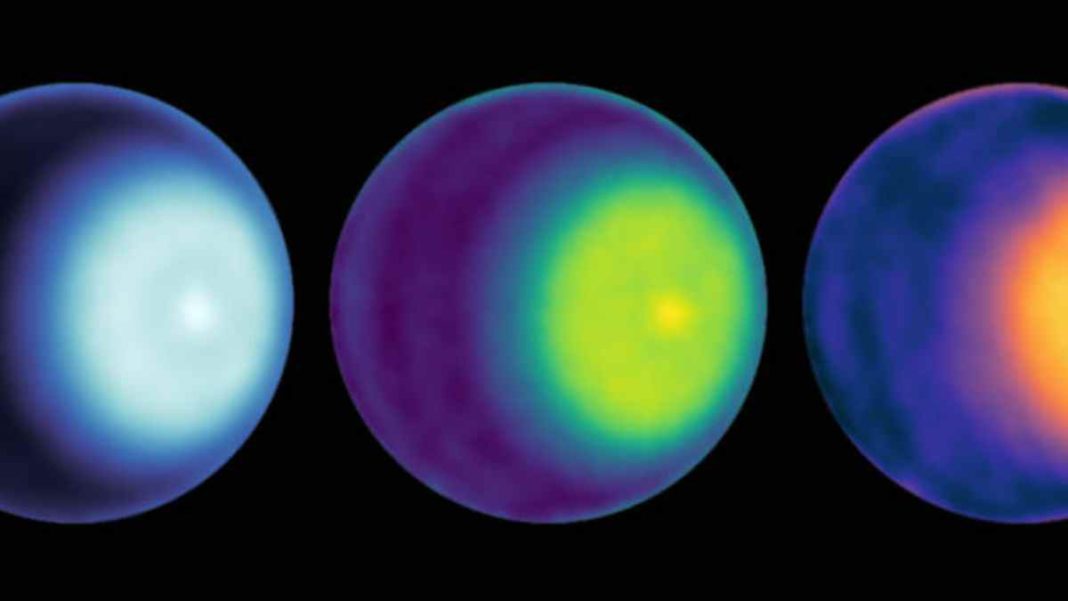UNITED STATES: In a groundbreaking development, NASA scientists have made a remarkable discovery on the distant ice giant Uranus. For the first time ever, compelling evidence of a polar cyclone has been uncovered, marking a significant milestone in planetary research.
The finding sheds new light on the atmospheric dynamics of this enigmatic planet, situated on the outskirts of our solar system.
The breakthrough came as researchers closely studied the radio waves emitted by Uranus using the massive radio antenna dishes of the Very Large Array (VLA) located in New Mexico.
By peering beneath the planet’s characteristic clouds, the team successfully identified a cyclone at the north pole of Uranus. This striking revelation follows the previous detection of cyclones by NASA’s Cassini mission on Saturn.
Lead author Alex Akins of NASA’s Jet Propulsion Laboratory in Southern California expressed his excitement about the findings, stating, “These observations provide us a lot more information about Uranus’s history. The world is far more dynamic than you would imagine. It’s not just a simple blue gas ball, either. There are numerous activities going on inside.”
The confirmation of a polar cyclone on Uranus further solidifies the understanding that cyclones or anti-cyclones exist at the poles of every planet in our solar system, except for Mercury, which lacks a substantial atmosphere.
Uranus, known for its icy composition and unique orbital characteristics, has captivated scientists for years.
However, due to its remote location and challenging observational conditions, obtaining comprehensive knowledge about the planet’s atmospheric behaviour has proven difficult.
To overcome these challenges, scientists leveraged the improved vantage point granted since around 2015, enabling a more detailed exploration of Uranus’ polar atmosphere.
The observations collected by the VLA in 2015, 2021, and 2022 penetrated deeper into the ice giant’s atmosphere than any previous studies, providing valuable insights into its dynamics.
The detected cyclone at Uranus’ north pole exhibited key characteristics of a strong cyclone: warmer and drier circulating air. This finding contributes to the growing understanding of the planet’s complex weather patterns and atmospheric phenomena.
This groundbreaking discovery not only unveils the hidden dynamics of Uranus but also highlights the diversity of planetary atmospheres within our solar system.
With every new revelation, scientists are reminded that the exploration of space continues to surprise and challenge our preconceptions.
As researchers continue to delve deeper into Uranus’ mysteries, further studies and observations are anticipated to unravel the enigma of this icy giant and unlock a wealth of knowledge about the complex dynamics at play in our cosmic neighbourhood.
Also Read: New Study Reveals Presence of Water on Uranus’ Moons



